November Event Recap
Published: November 15, 2014; updated: January 11, 2015
Vehicle
For November events I was using a newly procured 1993 Acura Integra. The intention was to use the driveline from Integra in my Civic, but since I had no other usable cars I decided to run Integra at VIR and, if it performed acceptably well, at Summit Point.
Events
November is when many of the Corner Craver family make a trip to VIR. The full experience involves running with Audi Club Potomac-Cheasapeake on Saturday and Sunday on the Full course and staying for Monday-Tuesday TrackDaze event, with Monday being run on the Full course and Tuesday being run on the Grand course (Grand West in recent years).
Coming out of the VIR Oak Tree corner. I routinely placed the car left of the curbing on the exit.
On the VIR back straight, running Grand West configuration.
The following weekend Metro NY PCA had a Friday-Saturday event at Summit Point Main course.
Brake Pads
Street brake pad compounds stood no chance of surviving four days at VIR, a track that has several hard braking zones.
Prior to departing I found out that one of the front calipers on the Integra was sticking and its piston could not be pushed back; this resulted in me running Saturday on Hawk HPS pads that came with the car (front and rear).
Hawk HPS pads are not really made for track duty. Throughout the day I was observing significant grooves in the brake rotors. When I replaced calipers at the end of the day, the sticking piston wore through the pad backing plate in one spot to the point of the piston contacting brake rotor; surprusingly, the other side of the car had even worse grooving of the rotor. With the sticking piston my braking was necessarily conservative, but in general pedal was quite soft.
I started Sunday with both front calipers new as well as new brake rotors, EBC Yellowstuff brake pads and complete flush of brake fluid with Superblue (or more precisely, Type 200). I ran this setup through all of Sunday and Monday.
EBC Yellowstuff pads lasted about 10 minutes before beginning to degrade. 15 minutes into a session degradation was complete and while the car maintained positive braking torque it was much reduced from that in the beginning of the session. After a cooling period the pads were ready to bite hard again, but only for 10 minutes or so.
Brake pad inspection on Tuesday morning revealed that inside pads on both sides of the car were almost worn to backing plates. In other words, EBC Yellowstuff pads lasted two days. However front rotors looked great - no cracks were visible. Rear pads remained Hawk HPS, and they worked well with EBC Yellowstuff front pads.
EBC Yellowstuff brake pads after two days of flogging:
#1:
#2:
#3:
#4:
On Tuesday morning I installed Hawk DTC-60 brake pads in the front. Rear pads remained Hawk HPS. DTC-60 pads had a longer "high torque" period compared to EBC Yellowstuff brake pads, but they were not maintaining full brake torque for even 30 minutes of each TrackDaze session.
More worrying was the pedal feel with Hawk DTC-60 pads - it was becoming progressively softer and softer with time. By second afternoon of Summit Point event, with 2.5 days on DTC-60 pads, pedal could be pressed all the way until the pedal stop with rather little effort.
I have not removed the brake pads yet but they appear to be crumbling:
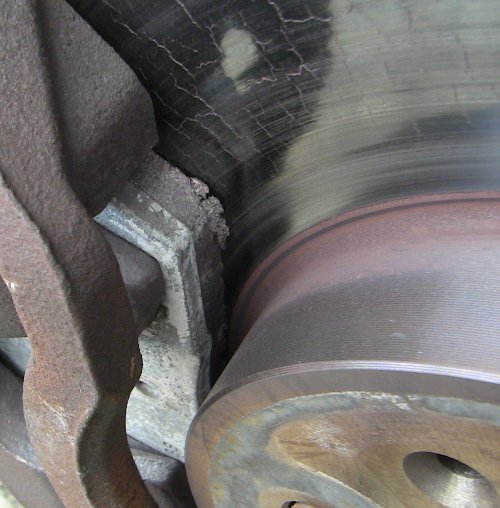
As well, after driving Tuesday with DTC-60 pads I noticed small cracks on both front rotors. On the following Saturday morning the cracks were larger; by Saturday afternoon cracks have almost spread to the outer edge of the rotor. These rotors were finished after serving 2 days with EBC Yellowstuff and 3 days with Hawk DTC-60, and as far as I could tell the cracks were 100% the responsibility of DTC-60.
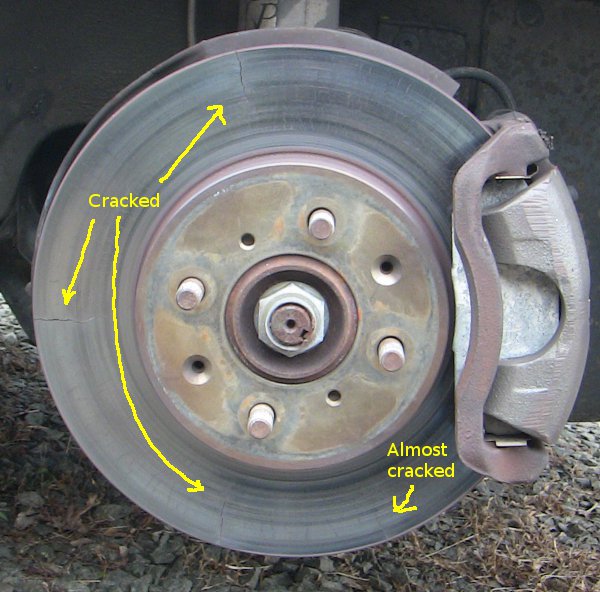
An important note here is that the car has no brake ducts, being a street car. At VIR ambient temperatures were about 60-70 degrees; at Summit Point ambient temperature was about 40 degrees. Brakes were getting hot at Summit Point but not to a level that they might be at in, say, July.
I intend to build my own front brake kit for Civic which will use 11.75" Wilwood friction rings, Dynalite calipers and either PFC or Raybestos brake pads. Brake ducts will also be installed over the winter.
Anti-Lock Brakes
This Integra is the first car with ABS that I both owned and tracked. As such the ABS system received a thorough flogging over the course of the 6 days.
At VIR I found out that ABS was doing its job, but I did not get a good feel for how much applied brake torque changed with temperature (or, time on track in each session). I would recognize brake pedal going soft but that was it. This resulted in me following some cars a bit too close into turns - especially later in the sessions as pads faded and braking distances increased, ABS was preventing tire lockup but I was not fully aware of how much the braking distances increased by.
At Summit Point I started experiencing tire lockup under braking. I don't know if ABS began to malfunction, if it could not handle 40 degree ambient temperature, R compound tires in that temperature, or something else was going on. With identical tires on all four positions and more aggressive front pads (DTC-60) than rear pads (HPS), the car was locking up rear tires going into turn 1 at Summit Main under hard braking eventually causing a spin there. I also had brake lockups going into turns 3 and 5 although these felt like front tire lockups. In the turn 1 spin on Friday I flat spotted both front tires and had to use street tires in the rear on Saturday; eventually I locked up a rear tire braking into turn 5 on Saturday and - although I did not spin - I flat spotted another front tire which largely ended the event for me.
Tire Wear
Throughout the 6 track days I have been using Nitto NT01 tires in 205/55-14 size on 14x6 wheels. The car had 1.5 degrees of front camber and 3 degrees of rear camber - set without a passenger. With 1.5 degrees of front camber the front tires were wearing very evenly but the car had a lot of understeer in corners.
Earlier this year I ran my Civic with 3 degrees of front camber, and while the car handled quite well the tires lasted only three days. The reason for rapid tire wear is that a front wheel drive car can continue to accelerate while understeering - and I in fact drive this way for lowest lap times. But sliding front tires is hard on them, and especially the Integra understeers a lot, being a street car. I have gotten quite puzzled how to combine high cornering speeds with good tire wear on a front wheel drive car at this point.
I also noted that NT01 tires were gradually falling off in their grip level. This was especially evident on data - as I was becoming more familiar with the car and driving harder, my minimum corner speeds decreased. This I attribute directly to tire degradation, and it was noticeable as early as Saturday at VIR, which was second day on the tires.
Toyo RR and Maxxis RC-1 are tires I will try to transition to. NT01 do not seem to be as consistent over their life, at least when driven hard.
Finally, NT01 tires were beginning to lose grip very quickly in each session. I normally had to make the second and, at the latest, the third lap the hot lap because all subsequent laps would be much slower between brakes and tires going away.
Suspension
Integra came with PIC coilovers which were height but not damping adjustable. It also came with upgraded rear sway bar and a rear strut bar. The rear of the car was too bouncy which was especially evident when driving around the paddock. At VIR the car behaved surprisingly well except it refused to rotate in turn 1. To fix this I ran about 6-8 psi more in rear tires than the fronts, and eventually disconnected the front sway bar. Without the front sway bar trailbraking in turn 1 resulted in the car rotating, at the cost of increased body roll everywhere else on the track.
At Summit Point I discovered that Summit Main was much bumpier than VIR. Lower ambient temperature probably contributed to this somewhat. The car - despite having fairly soft suspension, at least compared to real track cars like my Miata - would entirely lose grip in turn 3 and go into oversteer. Similarly to VIR turn 1, at Summit Main turn 9 the car would understeer heavily - even with the front sway bar disconnected.
Engine
The engine has performed very well. Before I bought the car I checked compression and leakdown and the numbers were excellent for both. Not having any warning lights I checked oil regularly - a first for me - and discovered that the car needed to be topped off twice a day in hard use. A good indicator of low oil condition is VTEC ceasing to engage.
Speaking of VTEC, I am very impressed with its feel, and now the phrase "VTEC just kicked in" makes a lot of sense. The car has a lot of motive power above 5500 rpm. I am not clear on whether 5500 rpm is VTEC engagement point or IAB / secondary butterflies opening point though, need to research this.
Below 5500 rpm the car has less perceived torque but nonetheless has reasonable acceleration. Looking at data, the car appears to be accelerating smoothly everywhere.
Gearing / Top Speed
When I was considering a B18 swap for my Civic I looked at gear ratios for various transmissions. Cable LS transmissions are not regarded as "optimal" by various sites and forums on the Internet but for my application their gearing seemed to be just about perfect, with very balanced gears and a 145 mph top speed guaranteeing that I would be staying off of redline on any reasonable road course.
I am not sure how exactly this is happening but in practice the Integra has an estimated top speed of 130 mph and I got it as high as 120 mph at VIR and 118 mph at Summit Main. With less worn tires and good brakes I expect it to hit 120 mph at Summit Main as well. In the lighter Civic the car should be getting quite close to its 130 mph top speed on road courses, never mind Pocono trioval.
My gearing is excellent, with no big drops between any two gears. I have not used second gear at either VIR or Summit Main which is nice. Entire front straight at Summit Main is run in 5th.
Lap Times
- VIR Full: 2:21.9 on Saturday.
- VIR Grand: 3:15.5 on Tuesday.
- Summit Main: 1:30.0 on Friday.
In this progression brakes have been getting better but tires have been getting worse. The car has a 94-01 GSR engine and PIC coilovers, and no interior rearward of the front seats. All times were set on 205/55-14 Nitto NT01 tires. Minimum competition weight of the car was 2600 lbs (with driver and fuel at fuel starve, about 1/8 tank).
Ambient temperature at VIR was about 50-55 degrees. Ambient temperature at Summit Point was about 35-40 degrees.
Overall
Even with street suspension the car is fun to drive, especially at VIR with less bounce in warmer temperatures with better tires that actually grip. Transplanting the engine into my Civic which is 500 lbs lighter curb weight to curb weight should make for a very nice vehicle. I expect to need to ballast the Civic up to 2400 lbs minimum required weight for Honda Challenge.
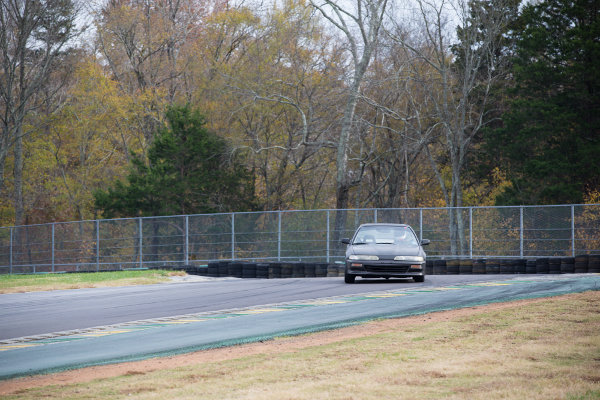
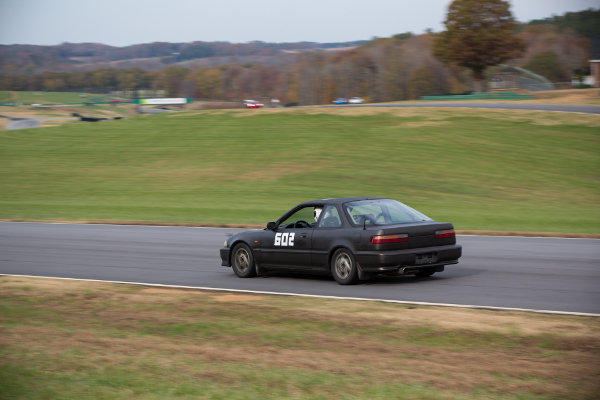
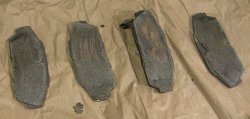
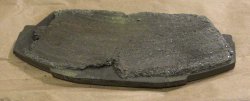

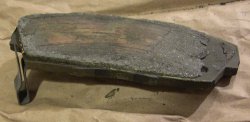

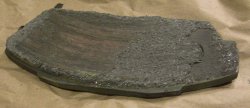

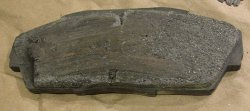

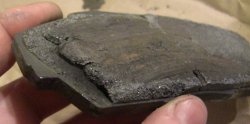
 Visit our
Visit our